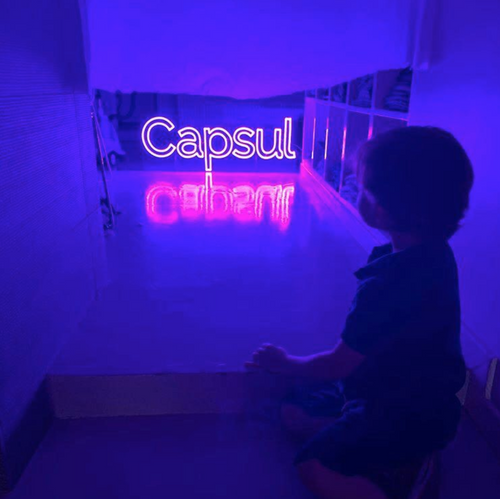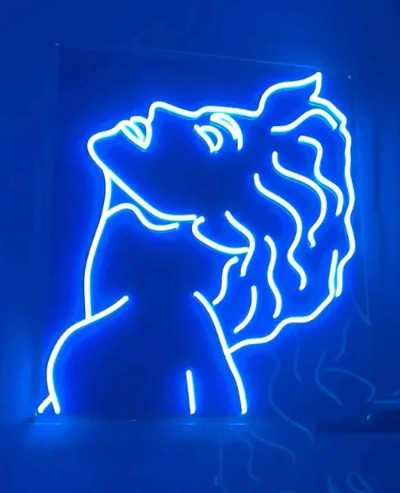Neon signs have become a popular choice for businesses, events, and personal spaces looking to make a bold visual statement. Their bright glow, eye-catching colors, and customizable designs make them ideal for attracting attention and creating brand identity. However, creating an effective neon sign isn't as simple as picking a design and lighting it up. There are many practical considerations that go into making a sign that not only looks great but also performs well over time.
From choosing the right materials to understanding electrical requirements, even small missteps during the design or installation process can lead to wasted money, poor visibility, or safety hazards. Whether you're a small business owner investing in your first sign or a designer working with a client, it's crucial to understand the common pitfalls many people encounter when creating neon signs.
Mistakes like selecting the wrong font, ignoring environmental factors, or overlooking local regulations can significantly impact your sign’s effectiveness and lifespan. Fortunately, most of these issues are avoidable with the right planning and insight.
What Are the Most Common Mistakes When Creating Neon Signs?
In this guide, we will explain the most common mistakes people make when creating neon signs — and how to avoid them for a successful, long-lasting result.
Creating a neon sign is not just about lighting up a space—it’s about delivering a clear message, enhancing visibility, and aligning with your brand’s identity. However, businesses often make critical mistakes during the process that can lead to poor visibility, wasted budgets, or even legal issues. Below are the 10 most common mistakes you should avoid when designing and installing a neon sign, with detailed guidance on how to get it right.
1. Ignoring Location Conditions
One of the most overlooked factors when creating a neon sign is where it will be placed. Many people fail to consider environmental conditions such as weather, humidity, sunlight, and temperature fluctuations. These factors can have a significant impact on both the performance and lifespan of a neon sign.
For outdoor signs, it's important to ensure that the materials used are weather-resistant. The sign should be built with protection against water, dust, and UV rays. Indoor signs, on the other hand, need to be evaluated for exposure to heat sources, airflow, or direct lighting which may impact visibility or safety.
Ignoring these conditions can lead to early wear and tear, electrical faults, or a complete sign failure. Always communicate the exact installation location with your manufacturer so they can recommend the appropriate materials and build quality.
Q: Can I use the same sign for both indoor and outdoor use?
A: No. Indoor and outdoor signs require different materials and build specifications. Always choose a sign rated for your specific environment.
2. Choosing the Wrong Font or Size
Font and size play a huge role in the readability of a neon sign. A design might look great on paper but turn out to be unreadable once turned into neon. Thin, cursive, or decorative fonts are particularly hard to read from a distance or in low-light environments.
The rule of thumb is: clarity over creativity. Choose bold, clean fonts and ensure that the size of the letters corresponds to the viewing distance. For example, each inch of letter height typically provides around 10 feet of readability. If your audience is going to see your sign from 30 feet away, the letter height should be at least 3 inches.
Failure to follow font and size best practices results in poor visibility, which defeats the entire purpose of having a neon sign.
Q: What type of font works best for neon signs?
A: Sans-serif and bold fonts are best. Avoid using script or overly thin styles unless the sign is intended for close-up viewing.
3. Forgetting About Power Supply and Wiring
Many people forget that neon signs require electrical power, and that wiring needs to be planned before installation. This includes knowing where the nearest power outlet is, how visible the wiring will be, and whether the circuit can handle the load.
Neglecting this step leads to last-minute changes, messy wire routing, or even dangerous setups. Make sure to include your electrician or installer in the planning phase. For permanent installations, it’s often best to hardwire the sign through the wall. For temporary setups, ensure that the plug and wires are safely hidden or contained.
Also consider voltage requirements, transformer size, and heat emission. A poorly planned power setup can damage the sign or your building’s electrical system.
Q: Do neon signs plug into a standard outlet?
A: Many LED neon signs do, but traditional neon signs might require a transformer and custom installation. Always check with the supplier.
4. Skimping on Quality to Save Cost
Budget constraints are real, but compromising on quality for the sake of saving money often results in higher expenses later. Cheap neon signs may use low-grade LED strips, thin backing materials, or subpar adhesives, all of which can lead to quick degradation.
Low-cost signs often experience issues like color fading, flickering, or outright failure within a short period. In contrast, quality signs might cost more upfront but last significantly longer with better performance and fewer repairs.
Always request information about the materials being used, the warranty offered, and any certifications. A slightly higher investment initially can save you money, time, and frustration down the line.
Q: How can I tell if a neon sign is high quality?
A: Check the LED chip brand, backing material (acrylic or aluminum is best), and whether the sign comes with a warranty. Good suppliers are transparent about these.
5. Failing to Match the Brand Aesthetic
Your neon sign is part of your brand’s visual identity, and it should be consistent with your overall branding. A sign that doesn’t match your color scheme, tone, or message can confuse your audience or send the wrong impression.
For example, a luxury boutique might want soft, elegant lighting with neutral tones, while a gaming cafe might benefit from bright, bold neon colors. A mismatch between the sign and the business environment can make the space feel disconnected and amateurish.
When designing your sign, refer to your brand style guide. Include your primary colors, brand font (if it works for neon), and keep the tone appropriate to your business personality.
Q: Should I use my exact brand colors in the neon sign?
A: Yes, if possible. Many manufacturers can custom match colors. If exact matching isn’t possible, choose a color that’s as close as possible and consistent with your branding.
6. Overloading with Too Much Text
Another common mistake is trying to say too much in one neon sign. While it’s tempting to include your business name, slogan, website, and social media handle, this creates visual clutter and reduces readability.
Neon signs are meant to be simple, attention-grabbing tools. Limit your message to just a few words — typically no more than five. If you need to convey more information, use a separate sign, printed material, or digital screen.
Remember, people often glance at signs while walking or driving past. If the message isn’t instantly readable, it will be ignored.
Q: What’s the ideal word count for a neon sign?
A: Stick to 1–5 words. Short and bold phrases work best.
7. Misunderstanding Installation Requirements
Installing a neon sign is not as simple as hanging a picture. Neon signs have weight, electrical needs, and sometimes require wall reinforcements or professional installation. Failing to prepare for this can lead to unsafe or unstable installations.
Before purchasing your sign, identify the type of wall it will be mounted on — drywall, concrete, brick, or wood — and choose the proper hardware. If the sign is heavy, you may need wall anchors or support brackets.
If you’re mounting on glass or installing it overhead, it's essential to consult a professional. Also, confirm whether permits or landlord approvals are needed if you’re renting the space.
Q: Can I install a neon sign myself?
A: For small, lightweight signs, yes. But for larger, wired, or commercial-grade signs, professional installation is recommended for safety.
8. Disregarding Local Electrical or Signage Codes
Every city or district has specific codes for signage — especially when it comes to neon or illuminated signs. Ignoring these rules can result in fines, forced removal, or complications with business licenses.
Common regulations include brightness limits, size restrictions, zoning compliance, and acceptable colors (some places ban red or flashing signs for safety). In some regions, electrical certification or UL-listed components are mandatory.
Always check with your local municipality or building authority before ordering or installing a sign. Most sign manufacturers can assist with providing required documentation or specifications.
Q: Do I need a permit to install a neon sign?
A: Often yes, especially for exterior or large signs. Check with your local zoning or permitting office for exact requirements.
9. Lack of Maintenance Planning
Neon signs require periodic cleaning and maintenance, but this is often overlooked. Dust, smoke, moisture, and other pollutants can dull the brightness or damage the components over time.
Even LED neon signs can develop dimming, color inconsistencies, or connectivity issues if not maintained. Create a routine maintenance schedule that includes gentle cleaning, checking for loose connections, and replacing damaged parts.
Also, be aware of your warranty terms and service options. If your sign does fail, having a supplier that offers repairs or parts can save you from replacing the whole unit.
Q: How often should I clean my neon sign?
A: Ideally once a month, using a soft cloth or duster. Avoid using water or strong chemicals.
10. Neglecting Digital Mockups and Feedback
Finally, many people rush into sign production without properly reviewing mockups or seeking feedback. What looks good on a sketch may not translate well into a real-life environment.
Always request a digital mockup of your sign placed on a photo of your actual space. This will help you judge size, color contrast, and readability. It’s also helpful to share the mockup with your team or customers to gather feedback.
Avoid making decisions in isolation — a few minutes spent reviewing the design can save you a costly revision later.
Q: Can I see a mockup before ordering?
A: Yes. Reputable suppliers always provide design previews and offer revisions before production.
Conclusion
Creating a neon sign may seem like a straightforward task, but as we've explored, there are several common mistakes that can undermine the effectiveness, safety, and longevity of your investment. From overlooking environmental factors to choosing unreadable fonts, and from ignoring wiring needs to skimping on quality materials, each misstep can result in poor performance, wasted money, or even regulatory issues. A well-designed neon sign is not just about lighting up a space—it’s about clear communication, brand consistency, and long-term value.
By paying close attention to installation requirements, adhering to local codes, and planning for maintenance, you set your sign up for success. It's equally important to simplify your message, match your branding, and take time to review mockups before final production. These are not just optional steps—they are essential to ensure your sign performs as intended.
Neon signs remain a powerful visual tool when done right. Avoiding these common mistakes can make the difference between a forgettable sign and one that truly makes an impact. Prioritize quality, clarity, and proper planning—and your neon sign will shine bright for years to come.




